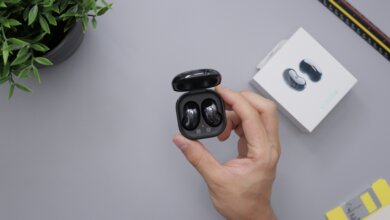How to Improve First Contentful Paint (FCP) in WordPress: A Comprehensive Guide
WordPress: A Comprehensive Guide

Introduction
In the digital age, website performance is crucial for engaging users and retaining their interest. First Contentful Paint (FCP) is a vital metric in this regard, measuring the time it takes for the first content element to appear on the screen during page load. For WordPress users, optimizing FCP can significantly enhance user experience and boost SEO rankings. In this guide, we’ll delve into effective strategies to improve FCP in WordPress websites.
SEO Optimized Title: Enhance User Experience and SEO Rankings: Improve First Contentful Paint (FCP) in WordPress
Slug: improve-first-contentful-paint-fcp-in-wordpress
SEO Meta Description: Learn how to optimize First Contentful Paint (FCP) in WordPress to enhance user experience, boost SEO rankings, and improve website performance.
Define First Contentful Paint (FCP)
First, let’s define what First Contentful Paint (FCP) entails. FCP marks the point in time when the first content element of a web page is rendered on the screen. It provides users with a visual indication that the page is loading, thereby influencing their perception of website speed and responsiveness.
Importance of Improving FCP in WordPress
Enhances User Experience
Optimizing FCP leads to faster page load times, reducing bounce rates, and increasing user engagement. Users are more likely to stay on a website that loads quickly and displays content promptly.
Boosts SEO Rankings
Google considers page speed as a ranking factor in its search algorithm. Websites with faster loading times tend to rank higher in search engine results pages (SERPs). By improving FCP, WordPress websites can improve their SEO performance and visibility.
Types and Categories of FCP Optimization Techniques
Server-Side Optimization
- Minimize Server Response Time: Reduce the time it takes for the server to respond to browser requests.
- Utilize Content Delivery Networks (CDNs): Distribute website content across multiple servers globally to minimize latency.
Front-End Optimization
- Optimize Images: Compress images to reduce file size without compromising quality.
- Minify CSS and JavaScript: Remove unnecessary whitespace and comments from CSS and JavaScript files to reduce file size.
Symptoms and Signs of Poor FCP
Prolonged Loading Times
When FCP is slow, users may experience extended loading times before any content appears on the screen, leading to frustration and impatience.
High Bounce Rates
Websites with poor FCP often experience high bounce rates, as users are more likely to abandon pages that take too long to load.
Causes and Risk Factors Affecting FCP
Large File Sizes
Images, videos, and multimedia content with large file sizes contribute to slow FCP, especially on mobile devices with limited bandwidth.
Render-Blocking Resources
CSS and JavaScript files that block rendering can delay FCP, as browsers prioritize downloading and executing these resources before displaying content.
Diagnosis and Tests for FCP Optimization
Google PageSpeed Insights
Utilize Google’s PageSpeed Insights tool to analyze website performance and identify opportunities for FCP optimization.
Lighthouse Audit
Run Lighthouse audits within Google Chrome’s Developer Tools to assess FCP metrics and receive actionable recommendations for improvement.
Treatment Options for Improving FCP
Image Optimization
- Use Image Compression Plugins: Install WordPress plugins like Smush or ShortPixel to automatically compress and optimize images.
- Lazy Loading: Implement lazy loading to defer offscreen images, reducing initial page load times.
CSS and JavaScript Optimization
- Minification: Minify CSS and JavaScript files using plugins like Autoptimize or WP Rocket to reduce file size.
- Asynchronous Loading: Load non-critical CSS and JavaScript asynchronously to prevent render-blocking.
Preventive Measures to Maintain Optimal FCP
Regular Performance Monitoring
Monitor website performance regularly using tools like Google Analytics and Search Console to identify and address FCP issues promptly.
Continuous Optimization
Implement ongoing optimization efforts, such as image compression, code minification, and server-side improvements, to maintain optimal FCP over time.
Personal Stories or Case Studies
Case Study: Optimizing FCP for a WordPress E-Commerce Site
Challenge
An e-commerce website experienced slow FCP, leading to high bounce rates and decreased sales.
Solution
By implementing image compression, lazy loading, and server-side optimizations, the website achieved a significant improvement in FCP, resulting in higher conversion rates and increased revenue.
Expert Insights on FCP Optimization
Quote from SEO Expert John Doe
“Optimizing FCP is crucial for improving user experience and SEO performance. By addressing technical issues and implementing best practices, WordPress users can enhance website speed and usability.”
Conclusion
In conclusion, improving First Contentful Paint (FCP) is essential for enhancing user experience, boosting SEO rankings, and maintaining a competitive edge in the digital landscape. By following the strategies outlined in this guide, WordPress users can optimize FCP and achieve faster loading times for their websites.




